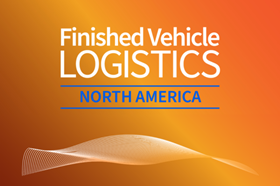International’s Tony Stinsa on the realities of EV truck logistics
Tony Stinsa, director of inbound and finished vehicle logistics at International, shares the logistical challenges in transporting electric commercial trucks and the innovations needed to move zero-emission vehicles more sustainably.
Related video
-

Red Sofa | Nissan’s Todd Myers on finished vehicle optimisation
-

Red Sofa | GM applies start-up agility to EV logistics strategies
-

Red Sofa | Anu Goel on how VW is reshaping logistics for US-Mexico flows
-

Red Sofa | Audi and Helrom’s rail project boosts sustainability
-

Red Sofa | Autoliv’s Gisela Linge on AI, agility & diversity in logistics
From charging constraints and driveaway limitations to infrastructure needs and design compatibility, International’s Tony Stinsa explores the shifting reality of moving battery-electric trucks across North America. In this Red Sofa interview from the Finished Vehicle Logistics North America 2025 conference, he discusses how finished vehicle logistics must evolve alongside the vehicles themselves, and why logistics requirements should be embedded in vehicle design from day one.
As the adoption of battery-electric trucks grows across commercial fleets, OEMs and logistics providers face mounting challenges in how these heavier, longer-range vehicles are moved to market. Unlike ICE trucks, many BEV trucks cannot easily be piggybacked or driven long distances due to charging infrastructure gaps and vehicle design constraints.
Stinsa discusses why traditional driveaway transport methods are often unworkable for BEV trucks, the high cost and emissions implications of using lowboy trailers, and how integrating logistics requirements into early product design is becoming a competitive necessity. Stinsa also explores the future role of rail in the electrified delivery network and highlights the need for new service models around charging and hours-of-service regulations.







